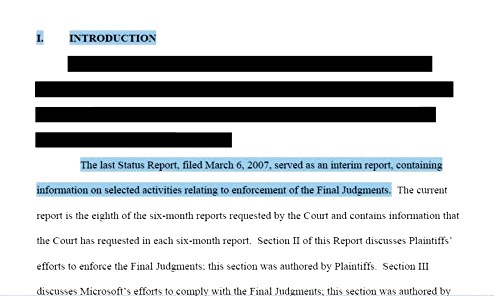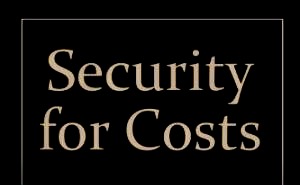Prior to the introduction of WESA on March 31, 2014 the law was clear that the court had no discretion to allow for gifts to a will witnesses or to his or her spouse. Estate of Jason M. Bird 2002 BCSC 1584.
The purpose of that rule was to prevent fraud and undue influence, but its rigid application often defeated the genuine intention of the testator.
As a result of s. 43 WESA, gifts made in such circumstances where a beneficiary or his or her spouse witnesses the will is still presumptively void, but the courts now have the discretion to declare them valid.
The factual circumstances of where s.43 will usually apply is the home made will, and not that prepared by a solicitor.
This is largely due to the effects of s. 58 WESA which empowers the court to order that a document or other record is fully effective as the will of a deceased person if the court is satisfied that the document represents the testamentary intentions of that deceased person.
After verifying the authenticity of the testamentary document, the courts will the focus in on what was the intention of the testator in exercising its discretion pursuant to s. 43 (4) WESA.
At this time there have been three cases decided by the court relating to s.43 WESA, and the court has allowed the validity of each bequest under s. 43 in each case after closely examining the facts and probable intention of the deceased.
1. Bach Estate (Re), 2017 BCSC 548
The testator was predeceased by his wife and was survived by one natural child and two stepchildren. in September 2014, the testator’s sister (the “applicant”) and her husband accompanied the testator to a notary public’s office for the purpose of creating a new will, in which he named the applicant as the sole beneficiary of his estate.
The notary public advised the testator to come back the next day to execute this new will. After that appointment, the testator had to be hospitalized the same day.
That same evening the testator signed a document in which he left his entire estate to the applicant. A physician and the applicant’s husband witnessed the document. The next day the testator passed away.
The applicant brought an application for an order that the document be declared a valid will pursuant to s. 37(1) and s. 58 WESA and that the gift under the will be declared valid pursuant to s. 43 (4) and the application was allowed.
The testator had informed his friend that he wanted to leave his estate to his sister and he had an appointment with a notary public for this purpose. Additionally, the physician who witnessed the document stated that the contents of the document were read aloud to him, that the testator agreed with the contents, and that he understood the document was intended to indicate his wishes for the estate.
Based upon all of the evidence the Court was satisfied that the document executed on September 9, 2014 amounted to a will and represented the testator’s testamentary intent. The gift was not void.
The document was handwritten and read:
SEPT. 9, 2014
I TERRENCE ARTHUR BACH
LEAVE ALL MY ASSETS
In full to my sister
Sharon Rose Thibodeau
“T. Bach”
Witness: “E. Willms”
SEPT 9/14
Witness: “R. Thibodeau”
September 9, 2014
The court’s analysis relied heavily on the s. 58 WESA case law that focused on the intention of the testator .
The court specifically relied upon Yaremkewich Estate (Re), 2015 BCSC 1124, that considered s. 58 and the concept of testamentary intent when considering curing deficiencies in a purported will, stating:
[35] In George the court confirmed that testamentary intention means much more than the expression of how a person would like his or her property to be disposed of after death. The key question is whether the document records a deliberate or fixed and final expression of intention as to the disposal of the deceased’s property on death. A deliberate or fixed and final intention is not the equivalent of an irrevocable intention, given that a will, by its nature, is revocable until the death of its maker. Rather, the intention must be fixed and final at the material time, which will vary depending on the circumstances.
The court allowed extrinsic evidence to be admitted on the question of testamentary intent under s. 43(5) and stated that the court is not limited to the evidence that the inspection of a document provides.
2. Wolk v Wolk 2021 BCSC 1881 reviewed the law of will witnesses or their spouses receiving a gift to them under and the effect of s. 43 (4) of WESA .
The deceased left the following document:
“I leave to my parents, Michael Dawson Wolk and/or Lynda Ruth Wolk should they survive me all monies and properties of my estate with the proviso that they in turn provide a portion of the estate to my daughters, Jessica Berens and [E.H.] either in trust or in a protected format such that they will in turn receive a stipend when they reach the age of twenty-five (25) should they also survive me. This includes the repayment of monies to my parents for loans and assistance given me over the years including the overseeing of my daughter [E.H.].
My parents can decide if the money goes to education payments, RRSPs’, or a similar portfolio to protect my daughters for later in life.
This is as given by me on this 9th day of September 2016.”
The beneficiaries of the “ will” witnessed the document.
Under s. 40 of WESA, the fact that a signing witness is given a gift under the will does not affect the capacity to serve as a witness:
Will Witnesses
s. 40 …
(2) A person may witness a will even though he or she may receive a gift under it, but the gift may be void under s. 43
However a gift to a signatory witness is automatically void by statute, but the court may declare such a gift valid on application under s.43(4) WESA.
Section 43 of WESA includes the following:
(1) Unless a court otherwise declares under subsection (4), a gift in a will is void if it is to
(a) a witness to the will-maker’s signature or to the spouse of that witness,
. . .
(3) If a gift is void under subsection (1), the remainder of the will is not affected.
(4) On application, the court may declare that a gift to a person referred to in subsection (1) is not void and is to take effect, if the court is satisfied that the will-maker intended to make the gift to the person even though the person or his or her spouse was a witness to the will.
(5) Extrinsic evidence is admissible for the purposes of establishing the will-maker’s intention under subsection (4).
The court followed the Re Bach estate decision finding that s. 43(4) is centrally concerned with testamentary intent.
The court was further concerned that absent a declaration of the will’s validity under s. 43(4), there would be a partial intestacy under s. 25 of WESA which would not have been the intended result of the deceased.
The Court found that the deceased wanted the witnesses to receive the bequests as a gift and allowed such under Rule 43(4) WESA.
3. Re Le Gallais Estate 2017 BCSC 1699 dealt with the charging clause in a will that provided that if the lawyer who prepared and witnessed the will should act as the executrix and attend to the legal work of the estate, then she would be entitled to a fee for the usual and proper charge for such legal work.
A legal issue arose as to whether the charging clause in favour of the lawyer was valid due to the fact that the lawyer witnessed the will.
The drafting lawyer M. Isherwood had known the deceased professionally for over 40 years.
The charging clause stated:
“If the said Constance Dora Isherwood should act as Executrix of this my will and should also attend to the legal work of my estate, she shall be entitled to the usual and proper charge for such legal work.”
The court found that the deceased was an experienced business woman who would have known that legal work was required to finalize her estate after her passing.
The court invoked S. 43 ( 4) WESA that a gift to the lawyer was intended and that under the circumstances, the charging clause was not void by reason of her having witnessed the will and would take effect.
Conclusion
The courts have focused on the intention of the deceased when determining relief under s. 43 WESA when a bequest has been made to a witness of the will, or to his or her spouse.
Prior to the introduction of WESA there were strict execution requirements under the previous Wills Act that when not followed undoubtedly resulted in outcomes that were contrary to the intention of the deceased. While well intended these execution rules were strict and the court lacked discretion to in effect do justice.
To date the cases reported under s. 43 (4) have followed the rationale of the several cases reported under as the curative provisions s. 58 WESA and focused on the fixed and final intention of the deceased when signing a purported testamentary document him. Where the court is satisfied as to its validity, it will order curative provisions under both sections of WESA.
Determining the intention of the deceased when examining a document appearing to be a will together with extrinsic evidence from witnesses can be a daunting fact driven exercise for the trier of fact, but is a fact of estate litigation as seemingly more and more people attempt to save money and do their own will.










